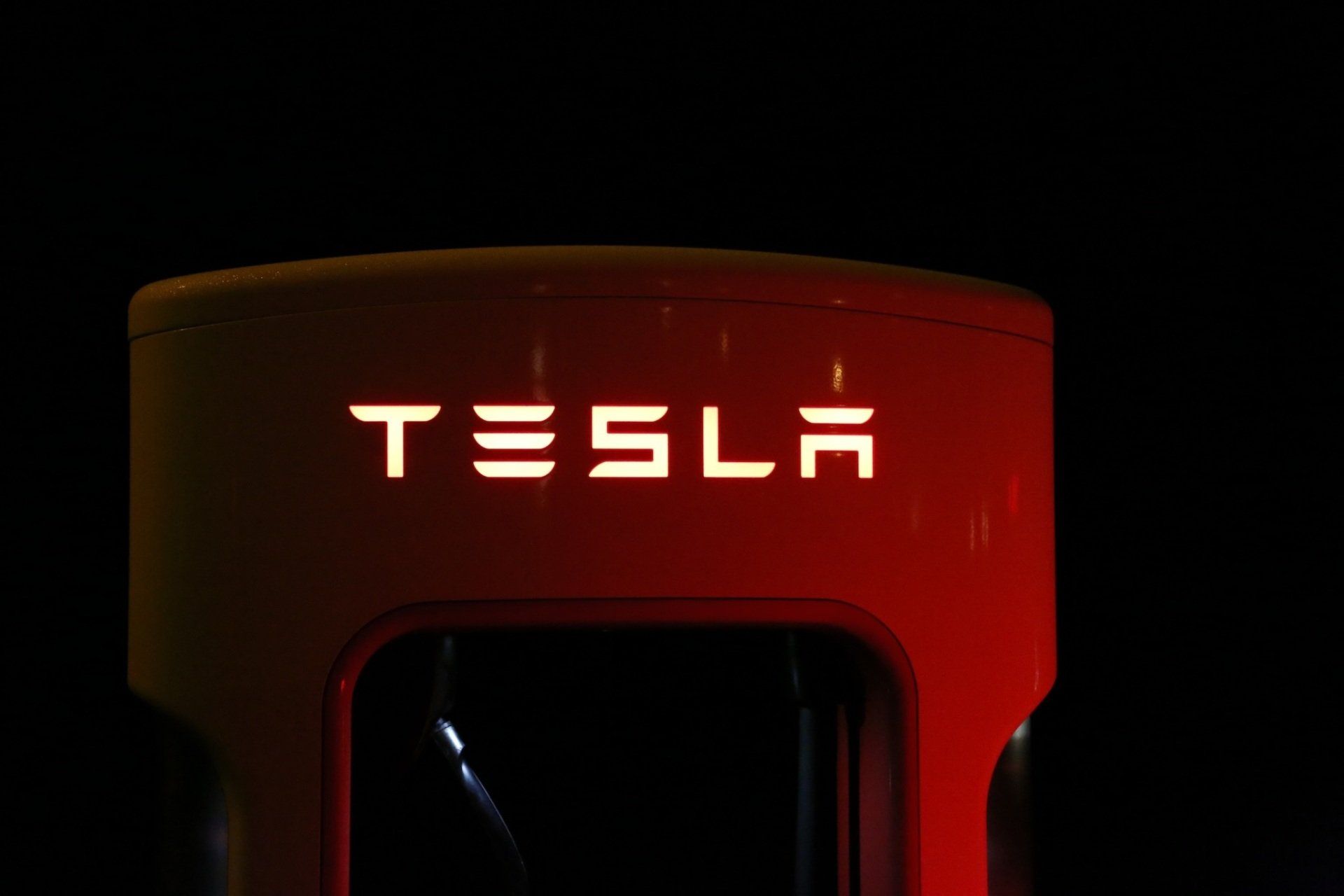The Auto Industry's Influence on Real Estate Markets: A 2024 Outlook
Introduction: The auto industry, a significant pillar of the global economy, has historically been a key driver in shaping urban landscapes and influencing real estate markets. As we step into 2024, it's essential to explore the contemporary state of the auto industry and understand how its current trajectory could impact the real estate market in this year and beyond.
CURRENT 2024 OUTLOOK FOR THE AUTO INDUSTRY
The auto industry in 2024 is marked by rapid technological advancements and a shift towards sustainable practices. Electric vehicles (EVs) are at the forefront, with significant investments in EV infrastructure, such as charging stations and altering cityscapes. Autonomous vehicle technology is also progressing, promising to revolutionize how we perceive vehicle ownership and urban mobility.
Tesla's Disappointing Performance and Dim Outlook
Tesla recently reported a disappointing fourth quarter, missing expectations and lowering its guidance for 2024. The company's revenue for Q4 was $25.17 billion, a slight 3% increase from the previous year but $500 million short of expectations. The reduced average selling price, due to significant price cuts, contributed to this modest revenue growth. Furthermore, the operating margin halved compared to Q4 2023, standing at 8.2%. Although net income more than doubled, thanks to a one-time noncash tax benefit, the forecast for electric vehicle volume growth in 2024 is notably lower than the previous year's rate.
CEO Elon Musk's commentary in the earnings call highlighted several challenges and strategic shifts. He cited the company's transition between two growth curves, the impact of high-interest rates on margins, and production limitations for Cybertruck, which has a higher demand than the current production capacity. Additionally, Musk acknowledged competition from China, attributing Tesla's survival to trade barriers. In a surprising shift, he emphasized Tesla's move towards robotics, mentioning the potential shipment of Optimus units in the future, despite uncertainties in this new product domain.
Given these developments, analysts and investors are reevaluating their stance on Tesla. The company's stock has already seen a significant drop following the earnings report. With the stock having doubled in 2023, investors are now considering whether to take profits or brace for potential declines. The combination of weak performance, uncertain prospects, and Musk's focus shifting towards areas like artificial intelligence and robotics adds to the reasons for potential divestment from Tesla stock. (source: Forbes)
General Motors (GM) Stock Performance and Outlook for 2024
In the week of January 16th to 19th, 2024, GM's stock remained relatively stable, closing at $35.51 per share, a minor decrease of 0.71% from the previous week's close of $35.26. This period saw little fluctuation, with markets closed on January 15th for Martin Luther King Jr. Day. By comparison, Ford Motor Company's shares experienced a more significant decline of 2.27% during the same timeframe.
Several factors influenced GM's stock stability. Legal challenges, including the dismissal of an oil consumption lawsuit and a new lawsuit concerning warranty obligations in California, impacted investor sentiments. Production developments, such as the rollout of the 2024 Honda Prologue from GM’s Ramos Arizpe plant in Mexico and a $653 million grant from the Biden Administration to expand the U.S. EV charging network, also played a role.
Strategically, GM is focusing heavily on the transition to electric vehicles (EVs). They announced major investments, including a historic $7 billion in Michigan facilities, expansion in battery production partnerships, and substantial investments in EV and autonomous vehicle (AV) technology. Despite challenges like the suspension of Cruise LLC's autonomous vehicle operations, GM remains committed to its EV and AV ambitions. The company anticipates its EV business will be profitable by 2025, with plans to double revenue by 2030 through digital platforms and connectivity services. In the meantime, GM continues to offer both electric and internal combustion engine vehicles, adapting to market demands and regulatory changes. (source: GMAuthority)
Goldman Sachs Forecasts U.S. Economy to Avoid Recession in 2024
Goldman Sachs, in its 2024 outlook, projects a positive scenario for the U.S. economy and stock market, differing from some other Wall Street forecasts. The investment bank predicts the U.S. will successfully dodge a recession next year, with the stock market expected to see further gains. David Kostin, Goldman Sachs' Chief U.S. Equity Strategist, forecasts the S&P 500 to rise to 4,700 points by the end of 2024, a 5% increase from current levels. This growth, however, would represent a slowdown compared to the over 17% gain experienced so far this year, largely driven by a rally in mega-cap technology stocks, particularly those in artificial intelligence (AI).
Goldman's optimistic outlook hinges on the U.S. achieving a "soft landing," skirting a recession, and attaining a higher-than-expected GDP growth of 2.1% in 2024. This growth projection surpasses the consensus on Wall Street and the Federal Reserve's estimate of 1.5%. The bank expects S&P 500 stocks to continue trading at about 19 times expected earnings over the next twelve months. However, the uncertainty surrounding the 2024 presidential election could impact this outlook, as election years typically see an average stock market gain of 8%.
Kostin's view on interest rate cuts also contrasts with many Wall Street analysts. He does not anticipate the Federal Reserve to initiate rate cuts until the fourth quarter of 2024, later than what futures traders are betting on. This delay in rate cuts suggests that significant stock market growth might not occur until late 2024 and into 2025. Goldman Sachs advises investors to seek opportunities in undervalued cyclical and small-cap stocks. This forecast is part of a broader trend of investment banks and Wall Street firms releasing their projections for the upcoming year, with differing perspectives on the direction of the economy and stock market.
(source: GoldmanSachs)
Toyota Motor Corporation (™) is likely to grow in 2024
Toyota Motor Corporation (TM) stands out as a compelling long-term momentum stock, making it an attractive choice for both new and seasoned investors. The key to successful investing often lies in confidently navigating the stock market, and Toyota offers promising potential in this regard.
To identify winning stocks aligned with your investment strategy, it's crucial to leverage reliable indicators. One such tool is the Zacks Style Scores, which assess stocks based on three widely followed investment types: value, growth, and momentum.
For investors who prioritize momentum, factors such as a stock's price trends and earnings outlook hold significant weight. The Momentum Style Score serves as a valuable tool for these investors, pinpointing opportune moments to build a position in a stock. It takes into account metrics like one-week price changes and the monthly percentage change in earnings estimates.
Toyota Motor Corporation, a Japanese automaker founded in 1973, stands as one of the world's leading automotive companies in terms of sales and production. Toyota's product portfolio is extensive, encompassing a wide range of models, from passenger cars and minivans to trucks, along with related parts and accessories. Beyond traditional combustion-engine vehicles, the company is actively working on fuel cells and automated vehicles. It has ambitious plans to offer committed electrified models or electrified options for Toyota and Lexus customers by 2025. Toyota's operations are divided into three segments: Automotive (accounting for 91% of net revenues in fiscal 2023), Financial Services (7.5%), and All Other (3.3%).
Toyota (TM) boasts an impressive Momentum Style Score of B and a VGM Score of A, accompanied by a Zacks Rank #3 (Hold) rating. Notably, TM shares have experienced noteworthy price movement recently, with a 2.6% increase over the past week and a 12.4% surge over the past four weeks. Over the last year, TM has delivered an impressive gain of 37.3%. In terms of trading volume, an average of 241,734.91 shares were traded over the last 20 days.
Earnings performance holds considerable importance for momentum investors. For fiscal 2024, one analyst has revised their earnings estimate upward for TM in the last 60 days, while the Zacks Consensus Estimate has seen an increase of $0.21, reaching $19.52 per share. Furthermore, TM has an average earnings surprise of 46.9%.
Given its solid Zacks Ranks, remarkable earnings metrics, and impressive Momentum and VGM Style Scores, investors should seriously consider adding Toyota Motor Corporation to their portfolios as it presents a promising investment opportunity.
(source:
YahooNews)
IMPACT ON REAL ESTATE MARKETS
Looking ahead to the real estate market's future, we can draw valuable insights from the findings in the automotive industry's recent trends and forecasts for 2024. Despite the differences in these markets, there are important takeaways that could impact the real estate sector.
1. Economic Growth and Interest Rates:
The forecasted slow growth in the economy, driven by high-interest rates and declining but still elevated inflation, can have implications for the real estate market. Higher interest rates may lead to increased mortgage rates, potentially reducing affordability for homebuyers. However, the expectation of avoiding a recession is positive, as it suggests a stable economic environment that can support real estate investment. Real estate investors should monitor interest rate trends and adapt their strategies accordingly.
2. Vehicle Supply and Pricing:
The automotive market's experience with supply shortages and rising prices during the pandemic has similarities to challenges faced in the real estate market, such as housing inventory shortages and rising home prices. The expectation of improved vehicle supply in 2024 may signal a similar trend in the real estate market, with increased housing inventory and potentially more favorable pricing conditions for buyers. Real estate professionals should watch for shifts in supply and demand dynamics that could impact property values.
3. Dealer Profitability and Margins:
The compression of margins for dealers in the automotive industry due to higher costs may parallel challenges faced by real estate professionals dealing with rising construction and materials costs. This could lead to higher home prices, impacting affordability for homebuyers. Real estate developers and builders may need to seek efficiencies and innovative solutions to maintain profitability while offering competitive prices.
4. Electric Vehicle Market Growth:
The automotive industry's emphasis on electric vehicles (EVs) and the need to convince consumers to adopt this technology may have relevance for the real estate market. As EVs become more prevalent, property owners and real estate developers may need to consider infrastructure for EV charging stations in residential and commercial properties to cater to the growing demand for electric vehicles.
5. Normalization in the Market:
The expectation of a more balanced and "normal" market in 2024 for the automotive industry is reflective of a similar desire in the real estate sector. Homebuyers and sellers alike seek stability and predictability in the real estate market after experiencing volatility in recent years. A more normalized market could encourage more people to enter the real estate market with confidence.
6. Changes in Urban Planning and Development:
The rise of EVs and autonomous vehicles necessitates new infrastructure, leading to changes in urban planning. Cities are redesigning spaces to accommodate EV charging stations, and as autonomous vehicles become more prevalent, we may see a reduction in the need for large parking lots and garages, freeing up space for other real estate developments.
7. Shift in Commercial Real Estate:
Dealership models are evolving with the auto industry's transformation. The traditional large showrooms located in prime urban areas might give way to smaller, experience-focused centers, impacting commercial real estate dynamics. Additionally, the rise of EVs could lead to new types of commercial spaces dedicated to battery service and maintenance.
8. Residential Real Estate Modifications:
Residential real estate is also adapting to the auto industry's evolution. New home constructions increasingly include EV charging ports, and in some cases, smart technology integration for autonomous vehicle storage and maintenance. This could lead to a rise in home values equipped with such modern facilities.
9. Impact on Suburban and Rural Areas:
The auto industry's advancement could bridge the gap between urban and suburban or rural living. With improved mobility options, living farther from city centers becomes more viable, potentially boosting real estate development in these areas.
10. The Role of Policy and Regulation:
Government policies and regulations, such as incentives for EV ownership or mandates for EV infrastructure in new developments, will significantly influence the real estate market. These policies could accelerate changes in both residential and commercial real estate sectors.
KEY TAKEAWAYS
- The car market in 2024 no longer favors sellers, as inventory accumulates while demand wanes due to affordability concerns. 💸
- Excessive lending by banks for vehicle purchases in the past 2 to 3 years has contributed to the current car market crisis. 💸
- The looming rise in unemployment and a potential recession in 2024 could trigger mortgage defaults, leading to a financial crisis. 📉
- Electric vehicles (EVs) have suffered significant depreciation in the car market, with some losing up to half their value within a year. 💰
- The push to sell EVs has driven dealers to slash prices, impacting the secondhand EV market. 🚗
- Dealerships must compete for customer business by offering more incentives and being flexible, given the declining sales. 💰
- Price history data suggests that the EV sector might face the harshest challenges, raising concerns for electric vehicles in the market. 💰
- Used car prices have followed a similar trajectory, enabling owners to profit from their Tesla Model Y if purchased in 2020 and sold in July 2022. 💰
The auto industry in 2024 is not just about vehicles; it's about an interconnected ecosystem that influences various sectors, including real estate. As the industry continues to evolve with technological advancements and sustainable practices, its impact on real estate markets will be profound and multifaceted. Stakeholders in the real estate sector must stay informed and adaptable to these changes to capitalize on new opportunities and navigate challenges effectively. The future of real estate, in many ways, is being driven by the wheels of the auto industry.
If you'd like assistance in finding your perfect Los Angeles home, my name is Blayne Pacelli and I'd be happy to help. Contact me today!












